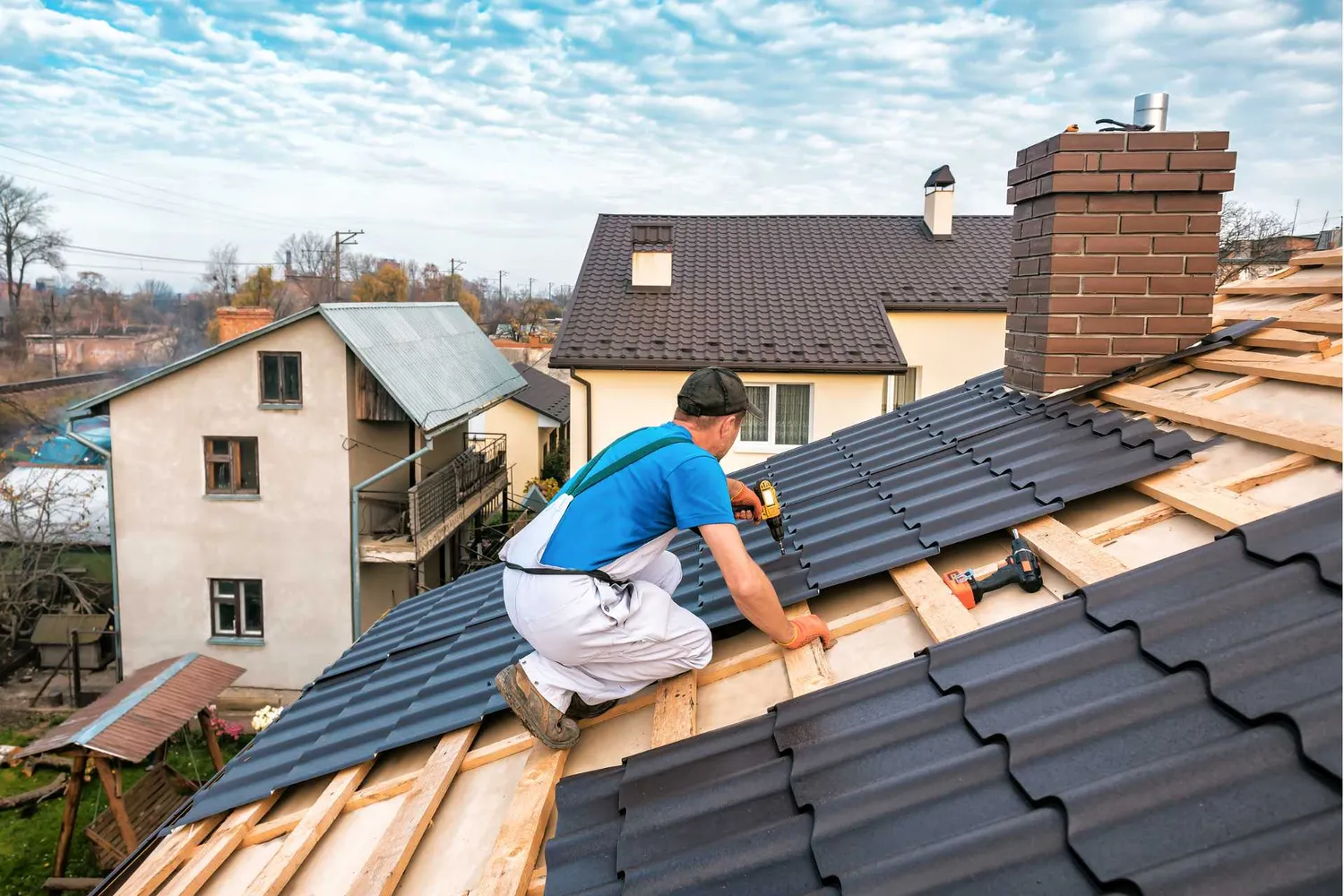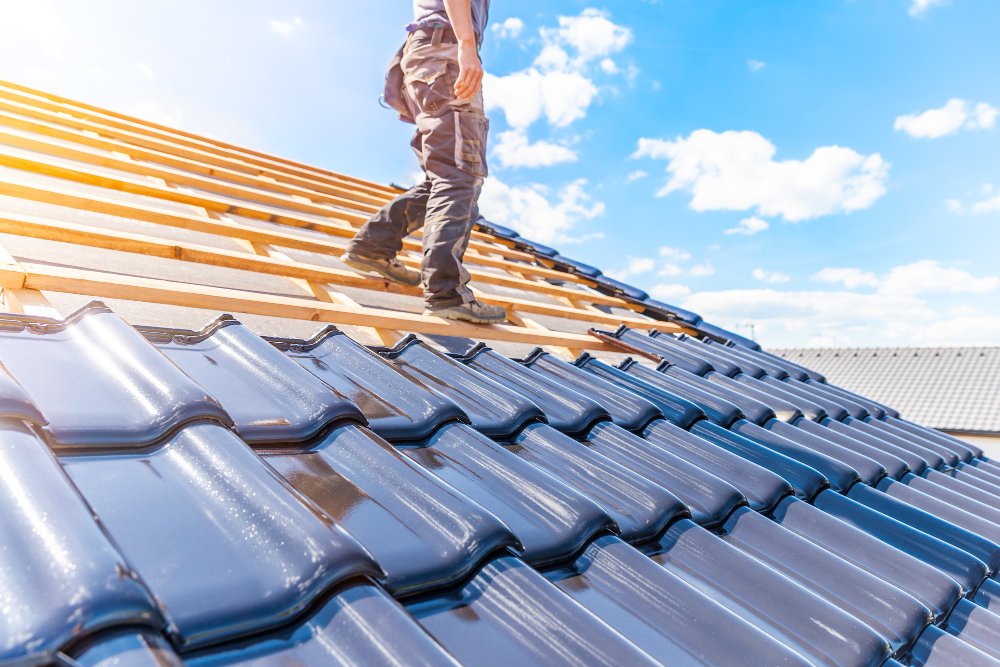The Ultimate Guide to Asphalt Shingles: Everything You Need to Know

When it comes to roofing materials, asphalt shingles have long been a popular choice for homeowners across the country. Known for their affordability, durability, and versatility, asphalt shingles offer a practical solution for both new constructions and roof replacements. Whether you're building your dream home or updating an aging roof, understanding asphalt shingles can help you make an informed decision that adds both protection and curb appeal to your property.
What Are Asphalt Shingles?
Asphalt shingles are composed of a fiberglass or organic mat base, which is then coated with asphalt and topped with mineral granules. The asphalt acts as a waterproofing agent, while the granules provide protection against ultraviolet rays and add color to the shingles. These shingles come in a variety of styles and colors, allowing homeowners to match their roof with the overall look of their home.
The two main types of asphalt shingles are three-tab shingles and architectural (or dimensional) shingles. Three-tab shingles have a flat, uniform appearance and are the more traditional of the two. Architectural shingles, on the other hand, have a layered look that adds dimension and can mimic the appearance of more expensive materials like slate or wood.

Why Choose Asphalt Shingles?
One of the primary reasons asphalt shingles remain a top choice is their cost-effectiveness. Compared to other roofing materials such as metal, tile, or slate, asphalt shingles are far more affordable both in terms of material cost and installation. This makes them an excellent option for budget-conscious homeowners who don't want to compromise on quality.
In addition to being budget-friendly, asphalt shingles are also relatively easy to install and maintain. Professional roofers can complete a typical asphalt shingle installation in a matter of days, which minimizes disruption to daily life. Repairs are also straightforward, making it easier to address issues like broken or missing shingles before they lead to more significant problems.
Longevity and Durability
While asphalt shingles are not the longest-lasting roofing material on the market, they still offer a respectable lifespan. On average, you can expect them to last anywhere from 15 to 30 years depending on the type of shingle, quality of installation, and local climate conditions. Architectural shingles tend to last longer than three-tab shingles due to their thicker composition and improved design.
Modern advancements have also improved the durability of asphalt shingles. Many options today are manufactured to resist wind, algae growth, and impact from hail. This added resilience makes them a solid choice for regions that experience varying weather conditions.

Color and Style Options
Another benefit of asphalt shingles is the wide array of color and style choices available. Homeowners can choose from earth tones, deep shades, and even reflective coatings designed to improve energy efficiency. The flexibility in appearance makes asphalt shingles compatible with a wide range of architectural styles, from traditional to contemporary homes.
Architectural shingles offer even more aesthetic variety, as their layered design can imitate the look of natural materials. This makes it possible to enjoy the appearance of a luxury roof without the high price tag or maintenance demands that typically come with premium materials.
Installation and Maintenance
Proper installation is key to maximizing the lifespan of asphalt shingles. A professional roofing contractor will ensure the shingles are laid correctly, with proper underlayment, ventilation, and flashing. Improper installation can lead to issues like leaks, curling, and premature wear, so it's essential to hire a reputable contractor with experience in asphalt shingle roofs.
Maintenance for asphalt shingles is relatively minimal but should not be ignored. Regular inspections, particularly after severe weather, can help identify and address minor problems early on. Keeping the roof free of debris, such as leaves and branches, and ensuring gutters remain unclogged will also help preserve the condition of the shingles.

Environmental Considerations
Although asphalt shingles are petroleum-based and not as eco-friendly as some other roofing options, there have been strides toward sustainability in recent years. Many manufacturers now offer shingles that can be recycled after their useful life, reducing the amount of roofing waste that ends up in landfills.
Additionally, certain asphalt shingles are ENERGY STAR® rated, meaning they meet energy efficiency guidelines and help reduce cooling costs by reflecting more sunlight. Choosing these reflective shingles can contribute to a more environmentally conscious home without sacrificing the benefits of asphalt.
Asphalt Shingles Maintenance Tips to Extend Their Lifespan

Asphalt shingles are among the most popular roofing materials for homeowners across the world due to their affordability, versatility, and relatively easy installation. While they are durable and capable of withstanding various weather conditions, they still require proper care and maintenance to maximize their lifespan. On average, a well-maintained asphalt shingle roof can last anywhere from 20 to 30 years. However, neglect and environmental exposure can shorten that lifespan significantly. To help ensure your roof stays in optimal condition, here are some essential maintenance tips and strategies.
Understanding the Importance of Routine Inspections
Regular inspections are the first step in maintaining asphalt shingles. It’s best to check your roof at least twice a year—once in the spring and again in the fall—along with additional checks after major weather events like storms or heavy snowfall. These inspections help you identify early signs of wear and tear, such as curling edges, cracked or missing shingles, or granule loss. Catching these issues early allows for quick repairs, which can prevent larger problems like leaks and water damage from developing.
When inspecting your roof, it’s also important to look at the flashing around vents, chimneys, and skylights. Damaged or lifted flashing can allow water to seep in, potentially causing damage to both your roof structure and the interior of your home. Even if the shingles themselves are intact, compromised flashing can become a weak spot over time.

Keeping Your Roof Clean and Debris-Free
A clean roof not only looks better but also functions more efficiently. Leaves, twigs, moss, and algae can accumulate on shingles, especially in shaded or damp areas. Over time, this debris can trap moisture against the surface of the shingles, leading to deterioration. It’s important to remove any organic buildup on your roof using safe, non-damaging methods. For light debris, a soft-bristle broom or leaf blower is typically sufficient. For moss or algae, consider using a gentle roof-cleaning solution that is specifically formulated to prevent damage to the shingles.
It’s crucial to avoid pressure washing, as the force can strip away the granules that provide protection against UV rays and weather. These granules are essential for preserving the structural integrity of the shingles, so any cleaning method should be as gentle as possible.
Maintaining Gutters and Downspouts
Your gutters play a significant role in roof health by directing water away from the shingles and structure. When gutters are clogged, water can back up under the shingles and lead to rot or mold growth. Keeping gutters clear of leaves and debris ensures water flows properly and doesn’t collect around the edges of the roof.
Regularly inspecting your gutter system for signs of sagging, rust, or detachment is also important. Make sure downspouts are positioned to direct water away from your home’s foundation. If water is pooling near the roofline or overflowing from the gutters, it could eventually lead to serious roofing problems.

Addressing Overhanging Branches and Shade
Trees that overhang your roof might provide some welcome shade during the summer, but they can also create risks for your asphalt shingles. Branches rubbing against the roof can scrape away granules and cause physical damage. Falling branches during storms can crack or puncture shingles, and heavy shade can encourage moss and algae growth by keeping areas of the roof damp for longer periods.
To reduce these risks, it’s wise to trim back any branches that come into contact with or hang over your roof. This not only protects the shingles from damage but also allows for better air circulation and sunlight exposure, both of which help keep the roof surface dry and healthy.
Ensuring Proper Attic Ventilation
The condition of your shingles is closely linked to the health of your attic. Poor ventilation can cause the attic space to overheat in summer or retain excess moisture in winter. Both conditions can significantly shorten the life of asphalt shingles. In hot weather, trapped heat can cause shingles to bake from below, leading to curling and cracking. In colder climates, poor ventilation can lead to condensation and ice dam formation, both of which can be destructive over time.
Make sure your attic is well-ventilated, with both intake and exhaust vents functioning correctly. A balanced ventilation system helps regulate temperature and moisture levels, preserving the longevity of your roofing materials.

Prompt Repairs and Professional Help
Even minor shingle damage should be addressed promptly. Small cracks or missing shingles might seem insignificant at first, but they can quickly escalate into larger problems if left unattended. Water intrusion, mold growth, and structural decay are all potential consequences of delayed repairs.
While some homeowners may be comfortable performing basic maintenance tasks, it’s important to call in a professional for more complex issues or if you're unsure about the condition of your roof. Roofing professionals can conduct detailed inspections, perform high-quality repairs, and provide advice on extending your roof’s lifespan further.
About The Site

Asphalt shingles are one of the most popular roofing materials in North America due to their durability, affordability, and ease of installation. Composed of a fiberglass or organic mat core that is coated with asphalt and topped with mineral granules, these shingles come in a variety of colors and styles, providing homeowners with ample options for customization. They are designed to withstand various weather conditions, including rain, wind, and UV rays, making them a reliable choice for protecting homes. Asphalt shingles are also relatively low-maintenance and can last anywhere from 15 to 30 years, depending on the quality and installation. Additionally, manufacturers often offer warranties that cover manufacturers' defects and can provide peace of mind for homeowners. With their balance of cost-effectiveness and aesthetic appeal, asphalt shingles remain a top choice for residential roofing projects.
Contact Details

Bussiness Address&Phone Number
Terzo Roofing
5379 11th St, Katy,
TX 77493
Ph: (713) 597-8433
Resource Links

https://www.tdi.texas.gov/column/what-to-know-about-replacing-your-roof-with-insurance.html
Infographic
